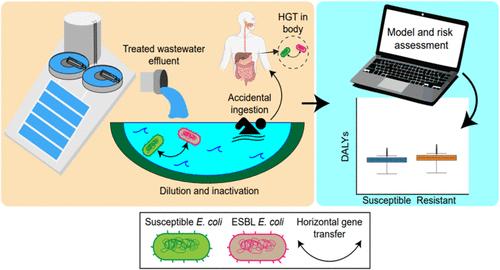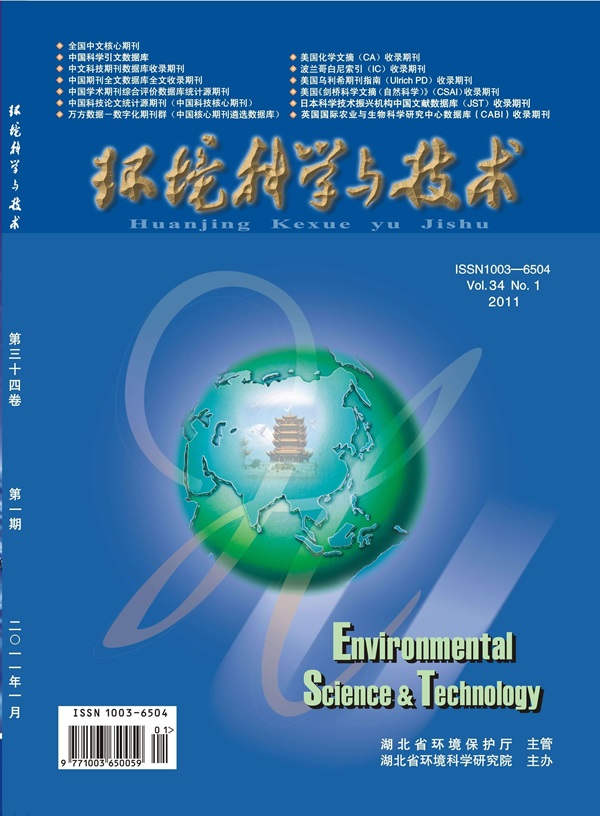Population Ecology-Quantitative Microbial Risk Assessment (QMRA) Model for Antibiotic-Resistant and Susceptible E. coli in Recreational Water
IF 10.8
1区 环境科学与生态学
Q1 ENGINEERING, ENVIRONMENTAL
引用次数: 0
Abstract
Understanding and predicting the role of waterborne environments in transmitting antimicrobial-resistant (AMR) infections are critical for public health. A population ecology-quantitative microbial risk assessment (QMRA) model is proposed to evaluate urinary tract infection (UTI) development due to recreational waterborne exposures to Escherichia coli (E. coli) and antibiotic-resistant extended-spectrum β-lactamase-producing (ESBL) E. coli. The horizontal gene transfer (HGT) mechanism of conjugation and other evolutionary factors were modeled separately in the environment and the gut. Persistence/dilution dominated HGT in the environment; however, HGT highly impacted predicted ESBL populations in the body. Predicted disability life year (DALY) risks from exposure to ESBL E. coli at concentrations consistent with US recreational water criteria were less than the 10–6 pppy benchmark value but greater than the susceptible E. coli DALY risks associated with a UTI health outcome. However, the prevailing susceptible dose–response relationship may underestimate ESBL risk if HGT rates in vivo approach those reported in vitro. A sensitivity analysis demonstrated that DALY values, E. coli/ESBL concentrations, and exposure parameters were influential on predicted risks. The model is a preliminary tool to begin the expansion of the QMRA paradigm to explore the impacts of evolutionary changes in AMR risk assessment.

求助全文
约1分钟内获得全文
求助全文
来源期刊

环境科学与技术
环境科学-工程:环境
CiteScore
17.50
自引率
9.60%
发文量
12359
审稿时长
2.8 months
期刊介绍:
Environmental Science & Technology (ES&T) is a co-sponsored academic and technical magazine by the Hubei Provincial Environmental Protection Bureau and the Hubei Provincial Academy of Environmental Sciences.
Environmental Science & Technology (ES&T) holds the status of Chinese core journals, scientific papers source journals of China, Chinese Science Citation Database source journals, and Chinese Academic Journal Comprehensive Evaluation Database source journals. This publication focuses on the academic field of environmental protection, featuring articles related to environmental protection and technical advancements.
 求助内容:
求助内容: 应助结果提醒方式:
应助结果提醒方式:


